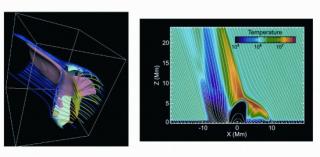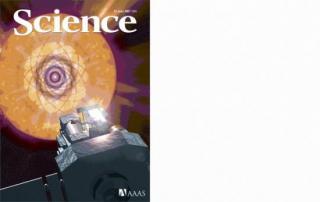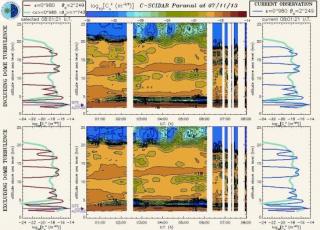
Se ha conseguido explicar la física de los chorros de rayos X observados recientemente con el satélite Hinode mediante la combinación de análisis de datos observacionales y simulaciones numéricas de última generación mediante computador en tres dimensiones espaciales. Entre los resultados más espectaculares obtenidos con el satélite solar Hinode es la aparición de un número muy elevado de chorros (jets) rápidos (velocidades de varios cientos de kilómetros por segundo) de alta temperatura (hasta decenas de millones de grados) con forma de torre Eiffel, lanzados desde la baja atmósfera solar
Advertised on

